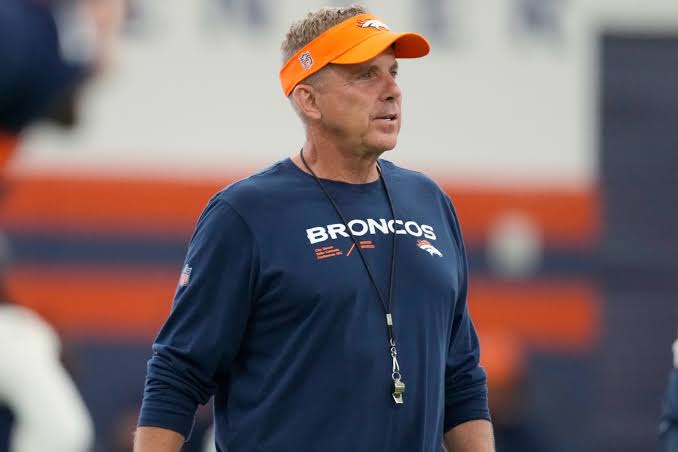Breaking News: Safety Upgrades in Motocross Gear Lead to Record-Low Injuries…
Breaking News: Safety Upgrades in Motocross Gear Lead to Record-Low Injuries…
In a groundbreaking shift for the sport of motocross, a combination of innovative safety gear and cutting-edge technology has contributed to a significant reduction in injuries. Reports from across the motocross racing community indicate that safety upgrades implemented in the past few years have led to a notable drop in both minor and major injuries during races, with statistics showing a record-low injury rate in 2024.
A New Era of Safety in Motocross
Motocross, known for its high speeds, aerial stunts, and aggressive terrain, has long been regarded as one of the most dangerous motorsports in the world. Riders are constantly pushing the limits of speed and control, navigating tight corners, steep jumps, and treacherous surfaces. As a result, injuries, from minor bruises to life-threatening crashes, have been a constant concern.
However, over the past decade, there has been a massive push toward improving rider safety. The development and implementation of advanced safety gear have become a top priority for manufacturers, team managers, and even the riders themselves. The results of these efforts are now becoming evident.
A Technological Revolution in Protective Gear
One of the primary drivers of this injury decline has been the introduction of more advanced, specialized equipment. Manufacturers have made leaps in the design and functionality of helmets, body armor, knee braces, gloves, and boots. These new technologies are specifically engineered to provide superior protection without compromising the comfort and mobility necessary for peak performance.
Helmets: The Cornerstone of Safety
Arguably the most important piece of safety equipment, motocross helmets have seen some of the most significant advancements. The introduction of multi-density foam technology has drastically improved impact resistance. Modern helmets are now equipped with MIPS (Multi-Directional Impact Protection System), a technology that reduces rotational forces during a crash, greatly lowering the risk of brain injuries.
“We’ve seen a huge reduction in head injuries,” says Dr. Robert Larson, a sports physician with expertise in motocross. “The integration of MIPS and better ventilation systems in helmets means that riders are not only safer but also able to stay cool and focused during long races.”
The lightweight, aerodynamic design of contemporary helmets has also contributed to improved safety. These helmets are designed to reduce neck strain during falls, helping to mitigate potential spinal injuries.
Body Armor: Impact Protection with Flexibility
Another crucial advancement has been in the development of body armor, which has evolved from bulky, restrictive suits to form-fitting, lightweight protection. The new armor systems incorporate flexible materials, such as D30 impact foam, that harden upon impact, providing a layer of defense against blunt force trauma.
“The advancements in body armor are game-changing,” says professional motocross rider Jason Turner. “It gives me the protection I need without restricting my movement. I can still perform at my best, knowing that I’m well-protected.”
Additionally, chest protectors now feature improved designs that shield key areas like the ribs, sternum, and spine. The armor is also more breathable, allowing riders to maintain peak performance without overheating.
Knee and Elbow Braces: Preventing Common Injuries
Knee and elbow injuries are unfortunately common in motocross due to the high-impact nature of the sport. To combat this, braces have been designed with increased precision and anatomical fit. High-quality knee braces, such as those from brands like Asterisk and EVS, offer improved support, stabilization, and protection against hyperextension injuries, which are often the result of hard landings or sudden falls.
The materials used in these braces are now much lighter, reducing the burden on the rider while providing effective protection. Additionally, many braces are customizable, allowing athletes to tailor their equipment to their specific needs and riding style.
Boots and Gloves: Preventing Foot and Hand Injuries
Motorcycle boots, too, have undergone a transformation. With upgraded sole designs, ankle protection, and shank reinforcement, modern motocross boots provide superior protection against twists, sprains, and fractures. The boots also provide better grip on the bike, which reduces the likelihood of accidents caused by loss of traction.
In the same vein, gloves have improved in both grip and protection. The use of durable materials like carbon fiber in the knuckle and palm regions has helped prevent hand injuries, a common risk for riders who often make high-speed landings.
Training, Safety Protocols, and Track Conditions
While the technological advancements in gear have played a central role in reducing injuries, other factors such as rider education, stricter safety protocols, and track conditions have also contributed to the decline in accidents.
Enhanced Rider Education
Many motocross training programs now include a heavy emphasis on safety techniques. Riders are taught not only how to navigate the track but also how to minimize the risk of injury by understanding their limits, maintaining proper body posture, and using safety equipment effectively.
“Riders are now more aware of how their body mechanics affect their performance and safety,” says Kyle Hayes, a professional trainer. “Proper techniques can reduce strain on the body and prevent many common injuries.”
Track Design and Maintenance
In addition to improved rider education and gear, track safety has seen significant upgrades. Organizers are placing a greater emphasis on maintaining and designing tracks that minimize dangerous conditions. Obstacles are now more predictable, jumps have been designed with safer landings, and dirt composition is continually adjusted to prevent erosion and instability.
Track crews are also more vigilant about maintaining clear signage and barriers, ensuring that riders are aware of potential hazards before they become an issue.
The Impact on Injury Statistics
The result of these advancements is a dramatic decline in injuries at motocross events. According to recent data from the American Motorcyclist Association (AMA), the overall injury rate for motocross riders in 2024 is at its lowest in over a decade. Broken bones, concussions, and soft tissue injuries have all seen substantial reductions, with the most significant drop observed in head and neck injuries.
“While we’ll never completely eliminate risk in a sport like motocross, the strides we’ve made in safety gear and rider awareness have had an undeniable impact,” says AMA spokesperson Karen Mitchell. “This is a game-changer for the sport and is helping to make it safer for future generations of riders.”
Looking Ahead: Continued Innovation
The safety revolution in motocross gear is far from over. Manufacturers are already working on next-generation technologies, including smarter gear with sensors that monitor impact forces and provide real-time data to teams and medical personnel. Additionally, there is growing interest in developing injury-prevention systems that can alert riders to potential hazards during races.
As the sport continues to evolve, it’s clear that the safety of riders will remain a top priority. With ongoing technological advancements, coupled with improved rider education and better track safety, the future of motocross looks not only thrilling but also remarkably safe.
For now, fans and riders alike can breathe a little easier knowing that the sport they love is safer than ever before.













Post Comment